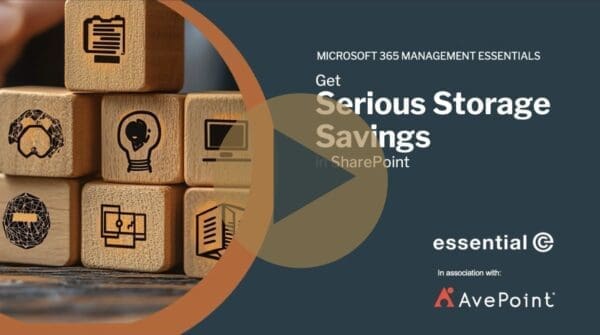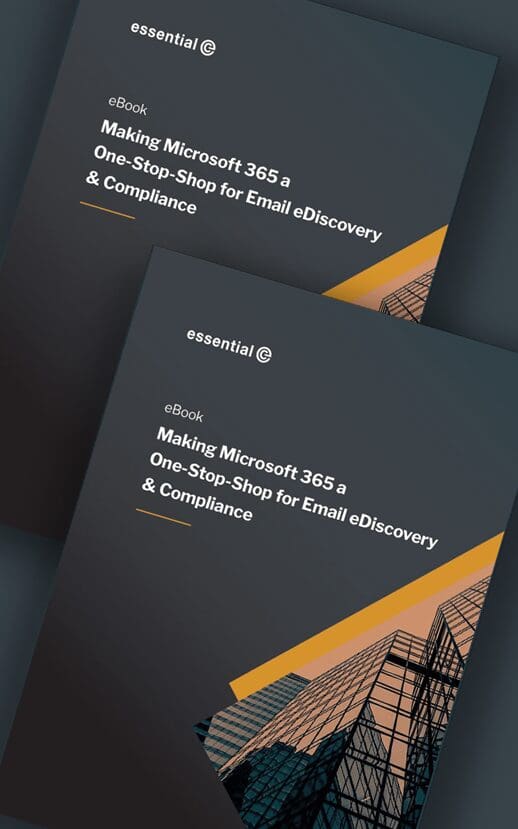SharePoint Management
Does Microsoft Now Offer SharePoint Archiving?
Introduction: What is SharePoint Online Archiving?
Archiving SharePoint Online (aka SPO) is an approach that involves moving older or less frequently used content to a separate storage space in order to keep your primary SPO sites organised and optimised in size.
Even though SPO includes a generous storage quota to start off with (1TB + 10GB per licenced user), organisations that work with large files (such as media, entertainment, healthcare, and construction) are finding it hard to keep within default SPO quotas and are facing hefty overage charges:
For example, one of our clients is currently looking at a staggering SharePoint Online overage charge of $2million a month (£1,640,000) a month.
By archiving (migrating) SharePoint to lower cost storage (such as an Azure cold storage tier), this charge can come down significantly, and until recently, third party solutions were the only ‘way to go’.
Does Microsoft now offer SharePoint Online Archiving?
There’s been rumblings about Microsoft having a ‘native’ SharePoint archiving capability since the ’22 Microsoft Ignite event.
This was in the context of using Syntex to perform AI-based content analysis to determine what should be archived, where, and for how long (rather than reliance on fixed attributes such as age, size, etc.).
I’m sure we’ll hear more about this later, but in the meantime, yes, Microsoft has a new Microsoft 365 Archive capability, which includes SharePoint Online archiving.
The rest of this article looks at how Microsoft’s SharePoint Online archiving service compares and contrasts with that offered by third-party solutions.
Microsoft Vs Third-party SharePoint Online Archiving
A comparison of the new SharePoint Online archiving service from Microsoft vs the third-party archiving solution we can offer is as follows:
| Microsoft’s SharePoint archive service | Typical Third-Party SharePoint Archiving |
|---|---|
| Currently archives at a site level only Microsoft’s archive service (currently) only offers archiving at a SharePoint site* level – all or nothing, so to speak. | Archiving available at an individual file level Our customers typically want archiving at a file level, based on attributes like ‘last accessed date’, file size, limiting the number of retained versions, etc. |
| No visibility for end users Users can’t see evidence of files still being there once archived. This could be unsettling for users & lead to increased requests to retrieve data. | Archived files remain visible as shortcuts The third-party tools we work with leave a ‘reassuring’ shortcut that end users can see. |
| Archived site restores must be initiated by admins SharePoint site restores (reactivations) must be initiated within the SharePoint admin centre. | Archived files can be accessed by users on demand End users can retrieve and/or restore archived files simply by clicking on a shortcut. |
| Long restore time Restores from native SharePoint archiving can take up to 24 hours. | Instant retrieval Restores using our third-party SharePoint archive service are immediate. |
| Restore costs may be prohibitive Site level archiving is $0.05/GB/month, which is reasonable, but reactivation is $0.60/GB and is charged for the full site. STOP PRESS: Microsoft recently waived the reactivation fee. | Archiving & retrieval costs better overall Third-party archiving costs vary, but are generally less than Microsoft archiving, especially when considering restore costs. Get in touch for comparative costs. |
| eDiscovery exports/reviews require restores Discovery will be able to find archived content, however to export or view results, the SharePoint admin will have to reactivate the relevant sites. | eDiscovery results can be individually restored The majority of third party archives include either a metadata search or full text search, with the ability to restore at an individual file level. |
*As far as we know currently, this includes all sub-sites if the site being archived is a parent site.
Conclusion
Although there is a promise of a file level archiving solution from Microsoft down the track, details on costs and functionality are scant at present.
Also if AI (Syntex) is involved in the file-level archiving solution, the processing of data will likely be part of the cost. See pay-as-you-go licencing costs of Syntex. This, again, may be price-prohibitive depending on the amount of data you need to to ‘process’.
So for now, if you want to shrink SharePoint Online storage costs without compromising the user experience, third-party SharePoint archiving solutions remain a very practical solution.
And, as you’ll be buying into an annually renewable SaaS subscription, you’ll be able to switch to ‘native’ Microsoft archiving further down the line as their solution matures.
One final note: as SharePoint Online data is set to grow exponentially, another area you might also want to pursue is stopping SharePoint and Teams sites from getting out of control in the first place…more on this to follow.
SharePoint Online Archiving – Discover Your Options
As an impartial vendor, Essential can provide enterprises a comprehensive comparison of these solutions, highlighting their unique features and pricing.
















